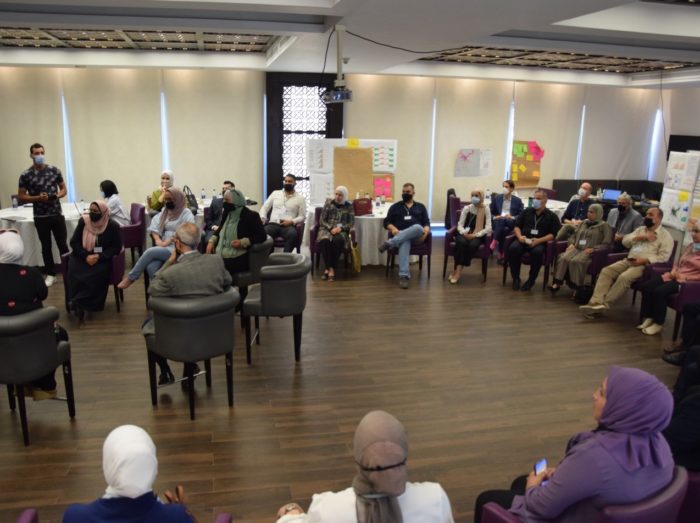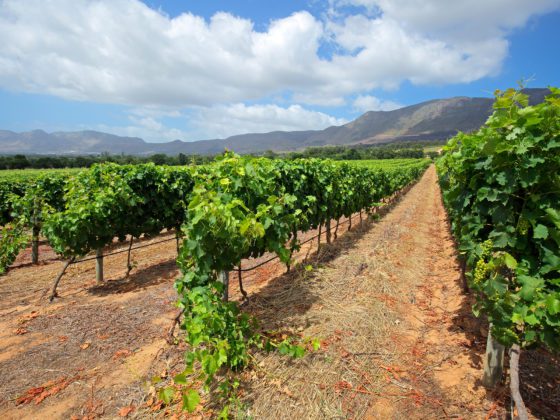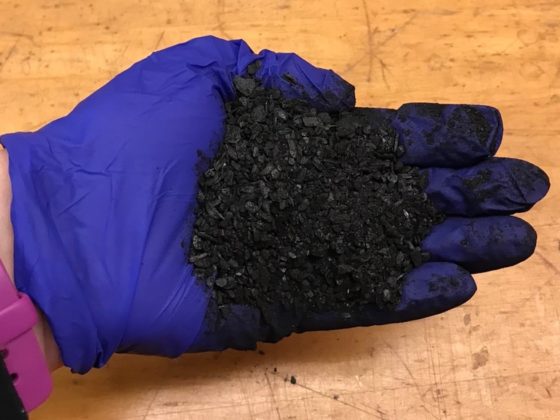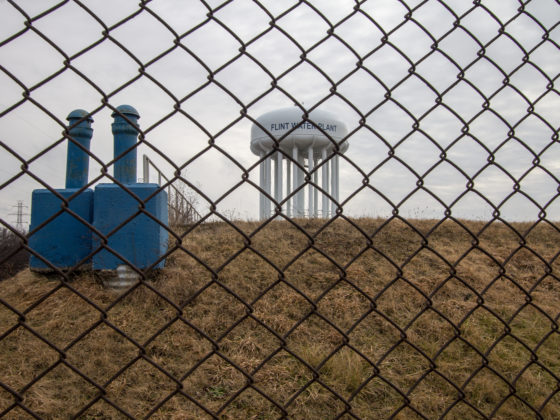On March 4, Dr. Steven Gorelick visited the University of Virginia School of Engineering. Gorelick is the Cyrus F. Tolman Professor in the Department of Earth System Science at Stanford University, a Senior Fellow at the Woods Institute for the Environment, and the Director of the Global Freshwater Initiative. His talk was about “Coupled Human-Natural Systems Analysis of Freshwater Sustainability: Narrative-driven Policy Evaluation.” We talked to him afterward.
The project you highlighted is work that you have been doing in Jordan. What are the key water challenges that Jordan faces, and why did you select this country in particular?
In 2014, we conducted a global analysis of freshwater vulnerability of 119 countries based on 19 different metrics (Padowski et al., 2015) and Jordan emerged as the most vulnerable. So that got our attention. It became clear that the country suffers from six major freshwater challenges. 1) Jordan is among the water-poorest countries in the world. 2) It has an intermittent and inefficient freshwater supply system. 3) Groundwater levels in Jordan are declining by 1 meter per year or more in many areas. 4) The region and Jordan in particular are subject to major climate change impacts, and are already showing a measurable decline in precipitation. 5) The nation is essentially landlocked except for access to the Red Sea at Aqaba in the south. Jordan cannot survive on its own water endowment and must rely on transboundary water. But Jordan competes for transboundary surface water with Syria and Israel, and for groundwater pumped from a shared aquifer with Saudi Arabia. 6) Jordan has a steadily growing population that is punctuated by influxes of refugees, most recently over 1 million people fleeing Syria during its 2011 civil war. All these factors put stress on Jordan’s freshwater system.
We managed to do some exploratory work and connect with key players in Jordan’s water sector. Most importantly, we engaged with the Minister of Water and Irrigation and with a major Jordanian agricultural business leader who provided tremendous insights and connections, plus visibility into water and agricultural issues. Having a farsighted minister as a cooperating partner was key. The minister (now former minister) is a brilliant water scientist who knows every aspect of Jordan’s water system, ranging from sources of supply to policies and challenges. He officially endorsed our project, which gave us access to various groups and enabled us to meet with water leaders and other water experts. We were provided with an unprecedented amount of data. So, we had the elements to conduct a comprehensive, nationwide analysis and develop a policy-evaluation tool that advanced technology that is of benefit to Jordan. We knew that this was an incredible opportunity to develop a new tool, engage in applied science and technology development, cut across disciplinary boundaries, and work together. Some people throw around the word “transdisciplinary” when what they did was essentially interdisciplinary, but I think we took a big step toward transdisciplinarity by working on this complex coupled human-natural system.
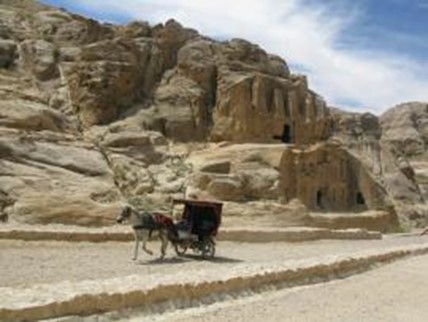
Can you specify some more about what the research projects entailed and give us a sense of the main findings?
Those are two very different questions and I need to discuss them separately. What’s entailed? Working on coupled human-natural systems is exciting but also requires a lot of discussion and learning about other fields. Our collaboration focusing on Jordan has been highly interdisciplinary, involving natural science, social science, and engineering research groups at Stanford, Laval University in Canada, King’s College London, Manchester University, the Helmholtz Centre for Environmental Research in Germany, Jordan University of Science and Technology, and the Austrian Foundation for Development Research (OEFSE). We have experts in economics, hydrology, water supply systems, agriculture, human geography, urban sociology, remote sensing, integrated systems and multiagent modeling, and stakeholder engagement. Most in our group are highly quantitative individuals from science, engineering, and economics. But others were trained in social science disciplines that are descriptive or that rely on human surveys. These social scientists have wonderful insights, but it is often very difficult to figure out how to incorporate them into a quantitative model. Although we did this to some degree, this still needs work.
What we did is develop a common understanding of terminology and methods, a deep appreciation of everyone’s perspectives and what is provided by those in different fields. Although online conferences are essential, our time in all-hands meetings and at during and after professionally facilitated stakeholder workshops were key to our team’s cohesiveness. Spending long days and evenings preparing and planning, plus reflection times during the evenings and interim days between workshops, produced mutual appreciation that enabled to us to communally resolve countless tough issues ranging from conceptualization to technical bottlenecks.
One important element of large team efforts is determining who gets credit for what. That can be very delicate to figure out. As the team leader, I had a few underlying guidelines. The first principle is that there is an overall project goal that we all contribute to and for which everyone gets credit. In our case, that was development of the integrated systems model. Then there are individual projects, mostly dissertation topics conducted within each particular group, as well as some small inter-group collaborations. Discussion must take place to predetermine the relative effort contributed to each of these two different, yet complementary, efforts. The second principle is to ensure that each student and postdoc has ownership of their primary work. They need this as motivation and for their career development as independent researchers. The third principle is to agree upon authorship of each element before the work is undertaken. Waiting to see how things evolve to determine authorship is a bad idea, as people who work on their component or multiple components may have a growing feeling that they deserve top billing. The clearly expressed obligation is that the lead for each publication must take charge of writing the coauthored papers with contributions of their collaborators and the oversight of their faculty or postdoc mentors. Sometimes spontaneous sub-projects emerge organically—typically about a focused analysis, development of a new method, or testing a particular hypothesis—that are not a central part of any other effort. Such projects were encouraged even if the faculty advisor was not involved as an author but provided advice and reviews the work. However, those involved in such projects must agree ahead of time on authorship order and on who takes charge of writing the paper.
What did we do and what did we find? We developed an integrated model that represents all critical aspects of the Jordanian water system at hierarchical levels of decision-making. Although I can provide a summary, to see what was done in detail it’s best to start with Yoon et al. (2021) and the extensive supplement to that paper. We did not know what we would find when we began, and we hoped that a combination of water supply-side and demand-side policy solutions would point the way to Jordan’s future. We analyzed the Jordanian freshwater system over the current century from two angles. One angle is interventions, which are policies that can be implemented within and by Jordan. They include water regulations, enforcement against water theft, tariffs, reallocation, equitable access, and new or repaired infrastructure. Each intervention addresses some aspect of supply and demand management. The other angle is scenarios, which are things that Jordan alone cannot reasonably control; these include climate change, population and demographic changes, refugee influxes, crop prices, and the path of socioeconomic development.
We grouped the interventions into five sets: baseline, supply increase, demand management, agriculture to urban reallocation, and comprehensive action. We grouped the scenarios into four sets: optimistic (e.g., moderate climate change, moderate population growth), drier climate, fast population growth, and crisis (e.g., major climate change, refugee influx). So we have “only” 20 combinations, which we call narratives. Consideration of the suite of narratives provides a broad picture of the future Jordan faces, including things Jordanians can control and others they cannot control. We analyzed these narratives over time on a monthly basis and at the subdistrict level for all of Jordan. For this analysis we considered water-focused metrics: vulnerability, stress duration, equity, and economic well-being.
Enough about methods, on to results. Jordan is currently in a dire condition, and it is highly likely to get much worse. If Jordan does nothing new, our work suggests that even under the optimistic scenario, 50% of those in the bottom 10% of income will receive less than 40 liters (10.5 gallons) per capita per day during the next two decades, and by midcentury, 90% of the population will also experience that level of vulnerability. Demand management shows modest improvement compared to agricultural-urban transfers, but the lower 10% income group remains highly undersupplied. Supply enhancement, with desalinated water from the Red Sea, produces significant relief to the general population but again leaves lower-income households vulnerable, particularly after midcentury. On the bright side, the comprehensive solution is capable of drastically reducing vulnerability under all but the crisis scenario at the end of the century. However, the comprehensive solution requires a myriad of interventions that few if any countries are able to do—including a large-scale infrastructural project, significant water reallocation from agriculture, theft reduction, fixing the pipes, and doubling water tariffs on the largest consumers.
Interestingly, our analysis shows that severe climate change is not as much of a driving force of vulnerability as population change. The region is so parched under moderate climate change that severe climate change does not have a tremendous incremental influence compared to population growth and the demands placed on water use by those additional people.
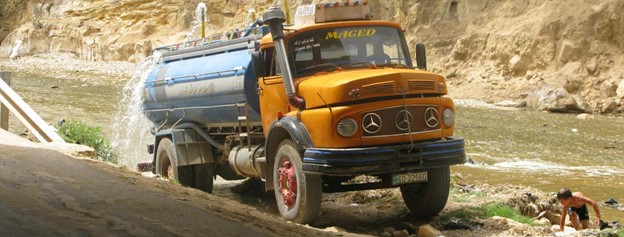
In the title of your talk there is a term that stands out: “narrative-driven policy evaluation.” What does it mean? What did it add to the project?
Let me answer the second question first. This project had a strong stakeholder component, with workshops at its initiation and conclusion, respectively (see first photograph). We obtained challenges for stakeholders and potential solutions from experts in addition to a model review / co-creation session at a special modeler workshop. Our stakeholders were carefully selected and represented diverse perspectives on water, food, and energy. Given the full support of the Minister of Water and Irrigation, we had several non-workshop meetings with the Ministry’s leadership. The Jordanian water managers are quite knowledgeable, but they don’t have a tool to evaluate their long-term water security options, and our model provided a set of metrics around water security that are needed to evaluate their policy intervention alternatives. In addition, our German partners at the Helmholtz Center for Environmental Research ran a sub-project called JordanCap, a capacity-building set of training sessions to enable Jordanian engineers to use the integrated model.
Regarding our narrative-driven approach—we analyzed multiple narratives involving combinations of scenarios and interventions. As an academic, I think it is very important to remain neutral when presenting results to policy makers. My approach is that I don’t present a single result but rather a suite of results that cover a range of potential futures. As such, we analyzed a series of narratives, each consisting of combinations of scenarios and interventions that, when taken together, reveal the severity of Jordan’s water situation and what is required to overcome it. In Jordan’s case, any single solution is unlikely to be effective. But when implemented together, they point in the right direction. Beyond our narratives, the basis for charting that way forward involves social and political considerations that are not necessarily captured by our metrics of water security. Jordan is a particularly complicated case as a safe haven in the Middle East, where countries in the region are often unable to cooperate, even for a resource as simple and basic as water.
What measures could Jordan undertake to fight its water challenges? And how hopeful are you that these measures will be implemented?
The Red Sea – Dead Sea project has been seriously considered since 2005, but it has been consistently derailed by one party or another. It is a multi-billion-dollar project without a donor willing to pay for it. Unless that situation changes, Jordan needs to look outside its borders for water, but the options are thin. Syria has not delivered Yarmouk-Jordan river water, even though there have been three agreements with Jordan that state Syria’s intent to share river water. Sharing groundwater with Saudi Arabia has been successful but the life expectancy of mining the fossil Disi transboundary aquifer is on the order of 80 years under recent pumping conditions, and the current pipeline is at capacity. Trading water for solar energy with Israel is a promising option. Recently both countries have moved to make this a reality. Israel can produce inexpensive desalinated water from the Mediterranean that it can transport through its national water carrier to Lake Tiberias (a.k.a. the Sea of Galilee, Kinneret). Jordan has lots of land in the south with great solar potential. So this idea, first proposed by the organization EcoPeace, seems like it might have legs. The project would establish a mutual dependency of the two nations, which seems to have some potential benefit. But the relationship between the two countries has been tenuous, so it remains to be seen how this plays out. It’s the Middle East and it’s anyone’s guess as to whether this will be implemented and how long it might last.
References
C. Padowski, S. M. Gorelick, B. Thompson, S. Rozelle, and S. Fendorf, “Assessment of Human-Natural System Characteristics Influencing Global Freshwater Supply Vulnerability,” Environmental Research Letters 10, no. 10 (2015): 104014, https://iopscience.iop.org/article/10.1088/1748-9326/10/10/104014?msclkid=11891a07a9cf11ec83a8e94bae797853.
Yoon, C. Klassert, P. Selby, T. Lachaut, S. Knox, N. Avisse, J. Harou, A. Talmant, B. Klauer, D. Mustafa, K. Sigel, S. Talozi, E. Gawel, J. Medellin-Azuara, B. Bataineh, H. Zhang, and S. M. Gorelick, “A Coupled Human-Natural System Analysis of Freshwater Security under Climate and Population Change,” Proceedings of the National Academy of Sciences 118, no. 14 (2021): e2020431118, https://doi.org/10.1073/pnas.2020431118.
Acknowledgments: In addition to the efforts of the coauthors of Yoon et al. (2021), our workshops in Amman were organized and facilitated by Karin Kueblboeck and Ines Omman, economic analysts and researchers at The Austrian Foundation for Development Research (OEFSE). Their contribution to this work are greatly appreciated. This work was supported by NSF Grants GEO/OAD-1342869 and ICER/EAR-1829999 as part of the Belmont Forum–Sustainable Urbanization Global Initiative/Food-Water-Energy Nexus theme; and by Stanford’sWoods Institute for the Environment in support of the Global Freshwater Initiative. The Natural Environment Research Council Belmont Forum provided UK funding (NE/L009285/1). As part of the Belmont Forum, the Deutsche Forschungsgemeinschaft provided funding to the Helmholtz Center for Environmental Research (UFZ) (KL 2764/1-1) and Leipzig University (GA 506/4-1); and the German Federal Ministry of Education and Research provided funding to UFZ (033WU002). The University of Manchester’s Computational Shared Facility is acknowledged. Any opinions, findings, and conclusions or recommendations expressed in this material are solely those of the authors and do not necessarily reflect the views of the NSF or other agencies that provided funding or data.

